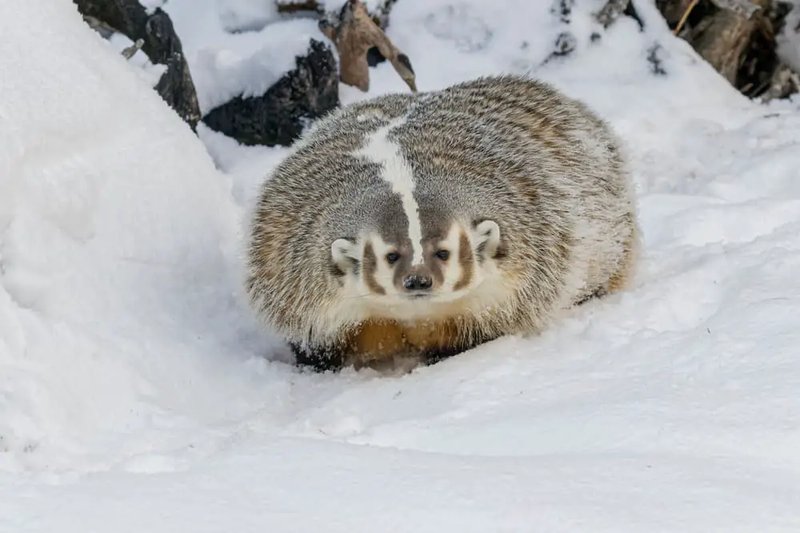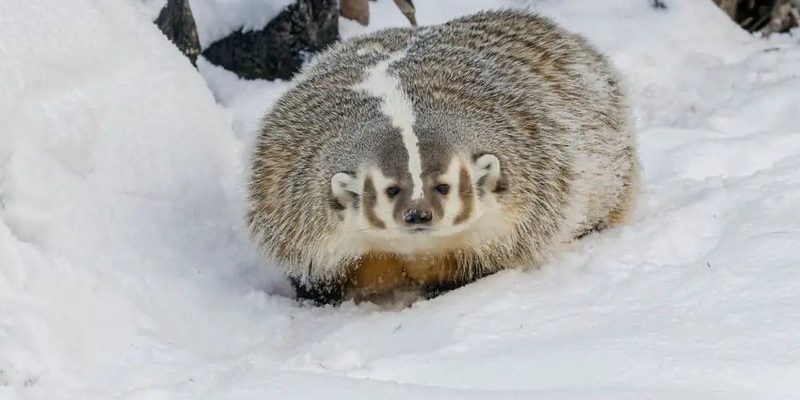
Just like how each person has their quirks, these animals have unique traits that set them apart while still reminding us of our otter friends. From their habitats to their social behaviors, each one tells a story worth exploring. So grab a cup of coffee, and let’s dive into the watery world of otter-like animals!
1. River Otter
Let’s start with the obvious: the river otter. Often mistaken for the more common sea otter, river otters are agile swimmers commonly found in North America. They have a streamlined body that helps them zip through water effortlessly. You might spot them in freshwater rivers, lakes, or even coastal areas.
River otters are known for their playful antics. They can be seen sliding down mud or snowbanks into the water, having fun just like children at a playground. You’ll recognize them by their longer tails and smaller size compared to sea otters. While sea otters can weigh up to 100 pounds, river otters typically range between 50 to 75 pounds.
Their fur is also a telling sign. While both types have dense fur to keep warm, river otters tend to be darker in color. So if you see a smaller, darker otter playing around a river, you can bet you’re looking at a river otter!
2. Sea Otter
Now, how can we leave out the sea otter? These fuzzy furballs are often seen floating on their backs, using rocks to crack open shellfish. Unlike river otters, sea otters are marine specialists. They have thick fur, the densest in any animal, which keeps them insulated from cold ocean waters.
You can tell sea otters apart from river otters not only by their habitat but also by their behavior. They often hold hands while sleeping to prevent drifting apart—how cute is that? They tend to be larger too, often weighing between 50 and 100 pounds, and have a rounder face with broader noses. Spotting a sea otter is like finding a treasure in the ocean!
Though they share the “otter” name, their lifestyles, habitats, and even diets are quite different. Whereas river otters hunt for fish and crabs in rivers, sea otters eat sea urchins and other marine creatures.
3. European Otter
Next up is the European otter, sometimes called the Eurasian otter. Found across Europe and parts of Asia, this otter is a master of both land and water. One distinguishing feature of the European otter is its thick, water-repellent fur. This adaptive trait helps them thrive in colder climates.
You might spot these otters in freshwater rivers, lakes, or coastal areas. Their habits are similar to river otters, as they love to hunt for fish and other aquatic creatures. However, they’re generally smaller and stockier than their North American cousins, typically weighing around 50 pounds.
While they share playful tendencies, European otters are a bit more solitary, usually coming together only during breeding seasons. Keep an eye out for their distinct whiskers, which are longer and more pronounced than those of many other otter species.
4. Giant River Otter
You might not have heard of the giant river otter, but it’s a fascinating creature! As the name suggests, these otters are the largest of all otter species, measuring up to 6 feet in length. They can weigh between 50 to 75 pounds and are primarily found in South America, especially in the Amazon River basin.
Giant river otters live in family groups, working together to hunt for fish, their primary food source. They’re social animals and are often heard communicating with each other through a series of chirps and growls. Their long, slender bodies and unique markings, which differ between individuals, make them quite recognizable.
If you were to compare them to river otters, you’d notice they have a broader head and shorter snouts. They also have a sleek, more elongated appearance compared to their smaller cousins.
5. Nutria
Now, let’s talk about the nutria, or coypu, which can be mistaken for a large, furry otter. Native to South America, nutria are semi-aquatic rodents that have made their way to North America and Europe. Although they share a similar habitat, nutria are not actually related to otters.
You can tell them apart by their long, round tails and large front teeth, perfect for gnawing on aquatic vegetation. They’re herbivores and have a more robust body shape compared to otters. While otters have sleek, streamlined bodies, nutria are bulkier and less agile in the water.
Nutria often inhabit wetlands and can sometimes be seen swimming in slow-moving waters. Their presence can be a bit controversial, as they can cause damage to waterways and crops, unlike otters, which play a vital role in maintaining the health of their ecosystems.
6. Beavers
Beavers are often considered the engineers of the animal kingdom, famous for building dams and lodges. While they might not be as playful as otters, they share a love for water. Beavers have a flat, paddle-like tail and large front teeth, designed for gnawing on wood and building their homes.
You can spot beavers in rivers or ponds, where they create their habitats. They’re much bulkier than otters, with stocky bodies covered in coarse fur. Their webbed feet make them strong swimmers, although they’re known for their hard work more than their playful antics.
What sets them apart from otters is their behavior and diet. While otters are carnivorous or omnivorous, beavers are strict herbivores—focused on trees, shrubs, and aquatic plants. So, if you see a furry creature hard at work chewing on a tree, it’s most likely a beaver!
7. Mink
Minks are small, agile carnivores that are part of the weasel family. Although they’re not as aquatic as otters, you might find them near water bodies, hunting for fish, frogs, and small birds. Their fur is soft and dense, making them somewhat similar to otters in appearance.
However, minks are much smaller, typically weighing between 2 to 4 pounds. They have long bodies and short legs, which help them squeeze into tight spaces while hunting. Their coats are usually dark brown or black, but some can have lighter or even spotted patterns.
One of the biggest differences is their solitary nature. Unlike otters that often hunt and play in groups, minks are more of a lone wolf. They’re also known for their sneaky behavior, using their size to their advantage while hunting.
8. Kinkajou
Though kinkajous might not be the first animal that comes to mind when thinking of otters, these nocturnal mammals share a love for fruit, especially in rainforest habitats. Kinkajous are often called “honey bears” because of their love for honey, and they have a long, prehensile tail that helps them navigate trees.
Unlike otters, kinkajous are not aquatic animals. However, their playful nature and social behavior can remind us of otters. They live in family groups and are known for their agility in trees, swinging from branch to branch.
Their rounded faces and large eyes give them a cute, similar look to otters, but their body shape is quite different. Kinkajous have a more rounded, stocky appearance compared to the sleek otter body.
9. Platypus
The platypus is a curious creature combining features from different animals: a duck’s bill, a beaver’s tail, and otter-like fur. Native to Australia, platypuses are semi-aquatic, spending much of their time in the water looking for insects and crustaceans.
You might be wondering how to tell them apart from otters. Platypuses have a distinctive flat bill and webbed feet, which make them unique. While otters are furry and sleek, platypuses have a more beaver-like appearance with their flat tail.
They’re also known for their unique reproductive method—they lay eggs, which is pretty rare among mammals. So, while otters and platypuses share some traits as aquatic animals, their appearances and behaviors are quite distinct.
10. Short-Clawed Sea Otter
Last but not least is the short-clawed sea otter. A smaller relative of the classic sea otter, these animals are often found in the waters of Southeast Asia. They live in shallow coastal areas and have shorter claws, as the name suggests.
Despite their size, they share many characteristics with the larger sea otters, including their playful nature and diet of shellfish. However, they’re generally smaller, weighing around 50 pounds, and have a slightly different fur texture compared to their larger relatives.
What’s fascinating about short-clawed sea otters is how they adapt to their environment, often using tools to break open shells, similar to their larger cousins. Their social structure is also interesting, as they often group together in rafts, floating side by side in the water.
So there you have it—ten animals that share similarities with otters, each unique in their own right. From the playful river otters to the curious platypus, these creatures offer a glimpse into the diverse and fascinating animal kingdom.
Next time you’re by the water or reading about wildlife, remember that while these animals might look a little like our favorite otters, they each have their own story to tell. Whether it’s their habitat, behavior, or physical traits, the differences are just as interesting as the similarities. And who knows? You may even find a new favorite in this otter-like lineup!

